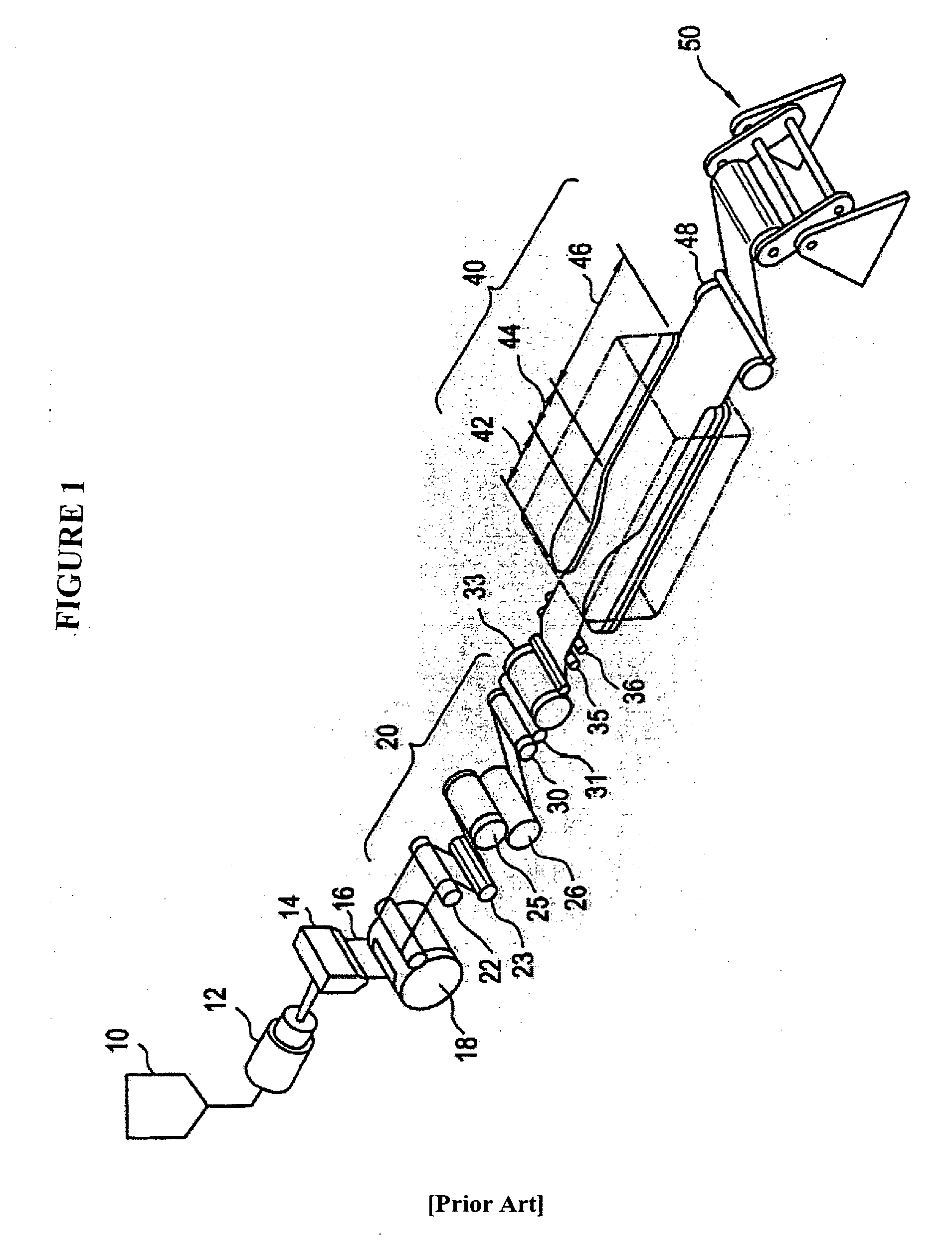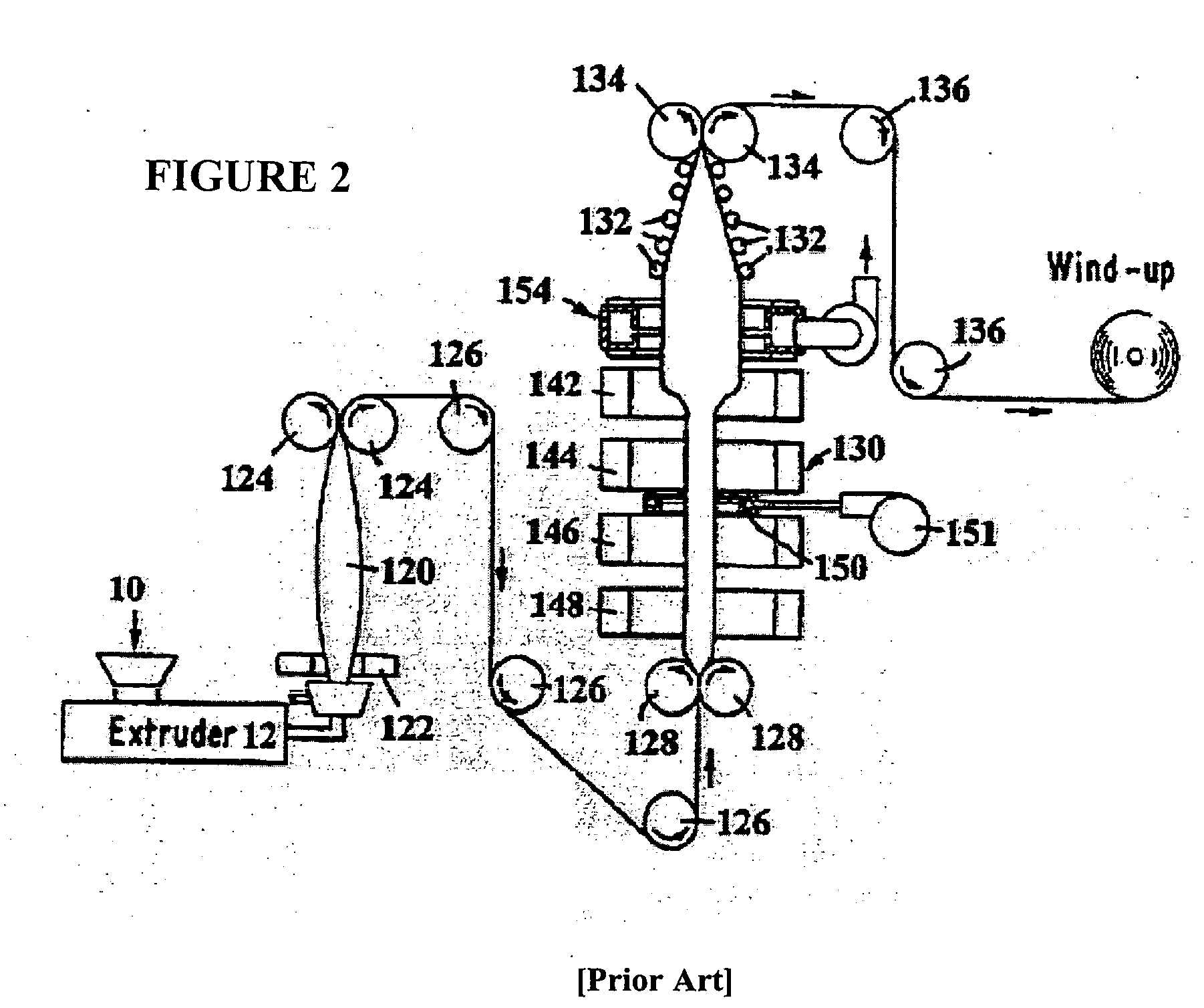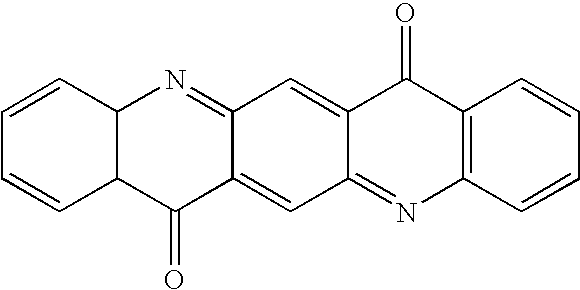Beta-nucleation concentrates for film applications
a technology of beta nucleation and concentrate, which is applied in the field of beta nucleation concentrate, can solve the problems of difficult to add beta nucleation directly to the non-nucleated resin of choice, the number of commercially available beta nucleated polypropylene resin is not the one that is best suited, and the number of commercially available beta nucleated polypropylene resin is not the best suited. achieve the effect of improving the properties of polypropylen
- Summary
- Abstract
- Description
- Claims
- Application Information
AI Technical Summary
Benefits of technology
Problems solved by technology
Method used
Image
Examples
example 1
[0122] An ethylene-propylene impact copolymer identified as Dow 7C06, having a melt flow rate of 1.5 and an ethylene content of approximately 9% was used as the base resin. A pellet blend consisting of 2.5% of the 75 ppm Q-dye concentrate and 97.5% of the Dow 7C06 was extruded into sheet having a thickness of 0.59 mm using a single screw extruder operating at an output rate of about 200 kg / hour. The sheet was extruded onto a heated cast roll that was set at a temperature of 90° C. The sheet then wrapped around a second metal roll set at 25° C., and following this the sheet passed over a series of heated rolls set to a maximum temperature of 135° C. The last roll in this series was moving at a faster speed (approximately six times as fast) than that of the previous roll, and the sheet was stretched as it passed between the slow and fast rolls. This monoaxial oriented film, which was identified as film #1, had a final of 0.124 mm. This oriented final film had a white / opaque appearance...
example 2
[0128] In this example two different polypropylene resins were extruded into sheet with and without the addition of a beta nucleant masterbatch, and the solid sheet was stretched in the machine direction (MD) to produce monoaxially oriented polypropylene (MOPP) film. The homopolymer polypropylene (HPP) had a melt flow rate of 3.5. The impact copolymer polypropylene (ICP) had a melt flow rate of 7.5 and an ethylene content of about 8%. The extruded sheets were produced on a 2.5″ single screw extruder, and had a width of about 74 cm and a thickness of about 0.5 mm. After exiting the extrusion die the sheet was cooled by contacting it with a heated metal roll that was set at a temperature of about 88° C. The sheet was then stretched by passing it over a series of heated rolls set at a maximum temperature of 107° C. The sheet was drawn between the slow roll and the fast roll, and the final film thickness was about 75 microns. The beta nucleated versions of these sheets were produced by ...
PUM
| Property | Measurement | Unit |
|---|---|---|
| Fraction | aaaaa | aaaaa |
| Fraction | aaaaa | aaaaa |
| Fraction | aaaaa | aaaaa |
Abstract
Description
Claims
Application Information
 Login to View More
Login to View More - R&D
- Intellectual Property
- Life Sciences
- Materials
- Tech Scout
- Unparalleled Data Quality
- Higher Quality Content
- 60% Fewer Hallucinations
Browse by: Latest US Patents, China's latest patents, Technical Efficacy Thesaurus, Application Domain, Technology Topic, Popular Technical Reports.
© 2025 PatSnap. All rights reserved.Legal|Privacy policy|Modern Slavery Act Transparency Statement|Sitemap|About US| Contact US: help@patsnap.com



